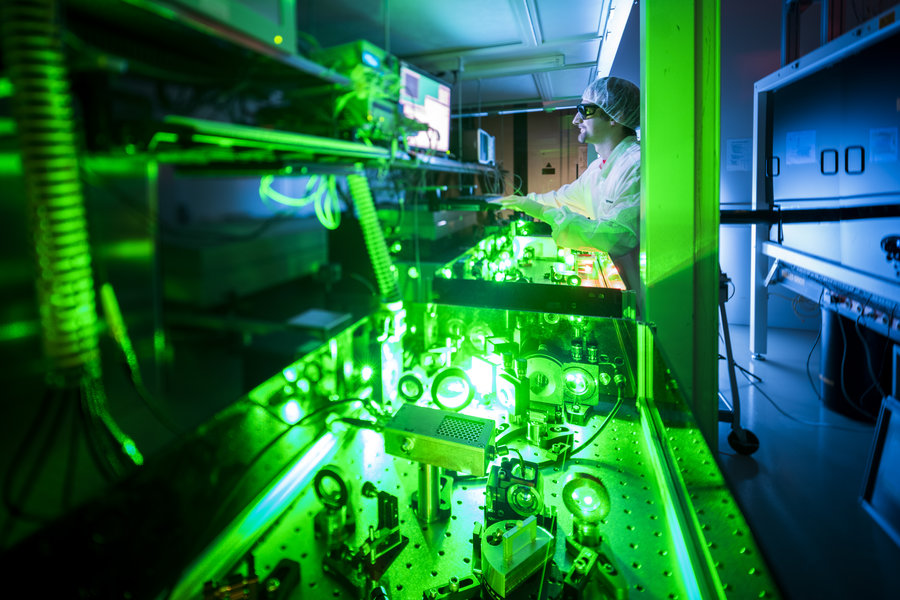Laser research community THRILLed — Ten million euro funding for high-repetition-rate laser technology developments
11.05.2023 |
The THRILL (Technology for High-Repetition-rate Intense Laser Laboratories) project received more than ten million euro of funding in the framework of the European Union’s HORIZON EUROPE program. The project aims at providing new designs and high-performance components for high-energy high-repetition-rate lasers, enabling the technical readiness level required to specify and build the needed devices. This work improves the performance, the energy efficiency and reliability in operation of such lasers at the partnering research institutions. Nine companies and research institutes coordinated by GSI Helmholtzzentrum für Schwerionenforschung in Darmstadt, and among them also FAIR (Facility for Antiproton and Ion Research), participate in THRILL’s efforts.
The project is well focused and deliberately restricted to three enabling technologies, which require the most urgent efforts and timely attention by the community: laser amplification at both high-energy and high-repetition-rate, the transport of high-energy laser beams over long distances, and the resilience of optical coating for large optics. To reach the goals, the major activity within THRILL will be organized around producing several prototypes demonstrating a high level of technical readiness. THRILL will address not yet explored technical bottlenecks — such as transport over long distances of large-aperture laser beams via relay imaging using all-reflective optics — and aims at proposing concrete steps to increase the performances and effectiveness of the industrial community through the co-development of advanced technologies up to prototyping in operational environments.
Advancing the technical readiness of these topics is strategically aligned with the long-term plans and evolution of the European ESFRI landmarks FAIR, ELI and Eu-XFEL, and of the French research infrastructure APOLLON, bringing them to the next level of development and strengthening their leading position. The project is also offering an outstanding opportunity to train a qualified work force for research institutions and industry. The structure of THRILL promotes synergetic work, fast transfer to industry and integrated research activities at the European level. Access to the research institutions will be granted as in-kind contribution.
GSI is well-suited for the coordinator role due to its long-standing experience in the conception, development and operation of mid-scale laser systems. GSI’s high-performance laser system PHELIX (Petawatt High-Energy Laser for Ion Experiments) has been one of the first lasers operated in combination with an accelerator research facility worldwide. PHELIX can deliver laser pulses with energies of up to 1,000 joules and laser pulses with a power of up to half a petawatt. “At PHELIX, scientists from around the world have the unique opportunity to conduct experiments that combine laser beams and ion beams produced in the existing accelerator facility. This makes it possible to study extreme states of matter, such as those that occur in stars or inside large planets,” explains Professor Vincent Bagnoud, head of the research department Plasma Physics/PHELIX at GSI/FAIR.
THRILL is funded by the EU’s HORIZON EUROPE program under the grant agreement 101095207. Participating institutions, apart from GSI/FAIR, are Helmholtz-Zentrum Dresden-Rossendorf, European X-Ray Free-Electron Laser Facility and Forschungsverbund Berlin in Germany, as well as Centre National de la Recherche Scientifique and Amplitude Systems in France, the ELI ERIC, Laserlab-Europe AISBL in Belgium and the University of Rochester in the USA. (CP)












